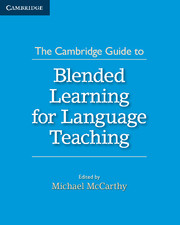Chapter 10 - Blending Pedagogy, Technology, Skills and Food: The French Digital Kitchen Project
Published online by Cambridge University Press: 22 September 2021
Summary
INTRODUCTION
In this chapter we report on the French Digital Kitchen project, a situated language learning environment where the kitchen communicates with users, instructing them step-by-step in how to cook French cuisine and teaching them aspects of the French language. From the blended learning (BL) perspective, this project links to broader definitions of ‘blended learning’ which commonly describe ‘blending’ as the combining of instructional methods and modalities with the inclusion of the computer as mediator (Graham, 2006). It is novel in that language learning takes place using digital technology in a kitchen, and in that cooking and language skills are learned simultaneously by pairs of learners while carrying out a task. The aim is to blend language learning principles with technological design and to see if it is possible to teach two sets of skills at the same time in a situated learning environment outside the classroom. More specifically here, blending involves the combination at the design and implantation stages of theory and methodology from language learning pedagogy (in this case Task-Based Language Teaching or TBLT), technology (digital interactive systems), skills (communicative skills in the L2) and food (cooking techniques and procedure – following a digitised recipe). In the following sections, we firstly describe the project background, then the design principles on which it is based in terms of TBLT and Human Computer Interaction (HCI). We then move on to describe how the French Digital Kitchen works in practical terms. Finally, we present evidence of the kinds of learning which occur in this environment. The discussion is based on accounts of the system in Seedhouse et al. (2013), Hooper et al. (2012) and Preston et al. (2012).
PROJECT BACKGROUND
The French Digital Kitchen project was the result of collaboration between computer scientists working on the development of assistive technology (Pham and Olivier, 2009) and applied linguists working on how digital technology can be combined with a task-based approach to language learning (Seedhouse and Almutairi, 2009). Our project involved taking a normal kitchen and adapting it for French language learning using activity recognition and digital sensor technology. We constructed a purpose-built kitchen (see Figure 10.1) that communicates with learners in French and gives them step-by-step instructions on how to prepare French cuisine and learn aspects of French language, developing two sets of skills simultaneously.
Information
- Type
- Chapter
- Information
- The Cambridge Guide to Blended Learning for Language Teaching , pp. 163 - 175Publisher: Cambridge University PressPrint publication year: 2015
